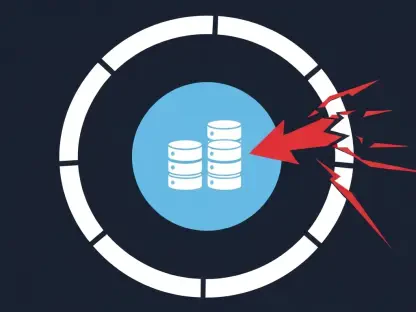Imagine receiving a seemingly urgent Zoom invite from a trusted colleague, only to discover later that clicking the link has granted cybercriminals full access to your organization’s systems. This scenario is not a distant possibility but a stark reality for over 900 firms worldwide, ensnared by a highly sophisticated phishing campaign that uses fake Zoom and Microsoft Teams invites to infiltrate corporate networks and bypass security measures. The purpose of this FAQ is to delve into the intricacies of this alarming trend, addressing critical questions about how these attacks operate, which industries are most at risk, and what defenses can be deployed. Readers will gain a comprehensive understanding of the mechanisms behind these phishing schemes and learn actionable strategies to protect their organizations from such deceptive threats.
This discussion will cover the scale of the campaign, the methods employed by attackers, and the broader implications for workplace cybersecurity. By exploring these facets, the aim is to equip businesses with the knowledge needed to navigate an increasingly complex digital landscape and stay ahead of evolving cyber threats.
Key Questions
What Is the Nature of This Phishing Campaign?
This phishing campaign stands out due to its meticulous design, targeting over 900 organizations globally by mimicking legitimate communication tools like Zoom and Microsoft Teams. Attackers send fake meeting invites that appear authentic, often originating from compromised email accounts, to deceive employees into granting access to corporate systems.
The significance of this approach lies in its exploitation of trusted platforms, which reduces suspicion among targets. By leveraging tools integral to daily operations, cybercriminals can infiltrate networks without triggering immediate alerts, often gaining administrator-level control for prolonged access.
Further compounding the issue, attackers utilize AI-generated phishing pages and spoofed communications to enhance the realism of their scams. This level of sophistication underscores the challenge businesses face in distinguishing between genuine and malicious interactions in a remote work environment.
Which Industries and Regions Are Most Affected?
The campaign disproportionately impacts specific sectors, with education and religious groups accounting for 14.4% of targeted organizations, followed by healthcare and pharmaceuticals at 9.7%, and financial services at 9.4%. Other affected industries include insurance, legal, retail, manufacturing, and technology, illustrating the broad reach of these attacks.
Geographically, the majority of victims are located in the United States, United Kingdom, Canada, and Australia. This distribution suggests a focus on regions with high adoption of digital communication tools, where reliance on platforms like Zoom creates fertile ground for such phishing tactics.
The targeted nature of these attacks indicates that cybercriminals prioritize industries with sensitive data or significant financial stakes. This selective approach amplifies the potential damage, as compromised systems in these sectors can lead to substantial data breaches or financial losses.
How Do Attackers Execute These Schemes?
At the core of these attacks is the weaponization of legitimate workplace tools, such as ConnectWise ScreenConnect, a remote monitoring and management solution. By exploiting these trusted platforms, attackers gain unauthorized access to endpoints while blending seamlessly into regular IT activity, evading conventional security measures.
The methodology often involves purchasing “attack kits” from dark web marketplaces for a few thousand dollars, with some vendors offering customized packages, training, and support for up to $6,000. This has transformed the scheme into a Remote Access Trojan (RAT)-as-a-Service model, lowering the barrier for entry among less-skilled cybercriminals.
Once access is secured, the attackers engage in account takeovers, lateral phishing, and data theft, maintaining persistence within systems for extended periods. This shift away from traditional password theft or brute-force methods to exploiting familiarity with software represents a dangerous evolution in phishing strategies.
Why Are These Attacks So Difficult to Detect?
One of the primary reasons these phishing attacks evade detection is their reliance on trusted tools and communications, which do not immediately raise red flags. Employees accustomed to receiving Zoom invites or IT support requests are less likely to question the legitimacy of such interactions, especially when they appear to come from known contacts.
Additionally, the use of compromised email accounts and AI-generated content enhances the authenticity of the phishing attempts. These elements create a veneer of credibility that bypasses human suspicion and, in many cases, automated security filters designed to catch more overt threats.
The stealth and persistence of these attacks pose a significant challenge to traditional cybersecurity frameworks. As attackers prioritize long-term access over immediate gain, their activities often go unnoticed until substantial damage has already been inflicted on organizational data and operations.
What Can Organizations Do to Protect Themselves?
To counter these sophisticated threats, businesses must adopt a multi-layered security approach that goes beyond conventional defenses. Implementing AI-powered email security solutions can help identify and block phishing attempts, even those that mimic legitimate communications with high accuracy.
Endpoint monitoring and zero-trust architectures are also critical, ensuring that no device or user is automatically trusted, regardless of their apparent legitimacy. These measures can limit the lateral movement of attackers within a network, reducing the scope of potential damage from a breach.
Equally important is staff awareness training, which equips employees to recognize suspicious communications and report them promptly. By fostering a culture of vigilance and combining it with robust technical safeguards, organizations can significantly enhance their resilience against such insidious phishing campaigns.
Summary
This FAQ highlights the critical aspects of a phishing campaign targeting over 900 firms with fake Zoom and Microsoft Teams invites, revealing the scale and precision of these attacks. Key industries such as education, healthcare, and financial services bear the brunt, with significant activity in the US, UK, Canada, and Australia, underscoring the global reach of the threat.
Insights into the attackers’ methods show a reliance on legitimate tools like ConnectWise ScreenConnect and dark web “attack kits,” marking a shift toward stealth and persistence. The difficulty in detecting these schemes stems from their exploitation of trusted platforms, making proactive defenses like AI email security, zero-trust models, and employee training essential for protection.
For those seeking deeper knowledge, exploring resources on cybersecurity trends and advanced threat detection can provide valuable perspectives. Staying informed about evolving tactics remains crucial for maintaining robust defenses in an ever-changing digital environment.
Final Thoughts
Reflecting on this phishing campaign, it became evident that cybercriminals had mastered the art of deception by exploiting the very tools businesses relied upon daily. This realization underscored a pivotal shift in the cybersecurity landscape, where trust in familiar platforms had been weaponized against organizations.
To move forward, a commitment to modernized security protocols proved necessary, ensuring that defenses adapted to these sophisticated threats. Businesses were encouraged to evaluate their current measures, integrate advanced technologies, and prioritize ongoing education to safeguard against future risks.
Consideration of how these evolving tactics might impact specific operational environments was vital. Tailoring protective strategies to address unique vulnerabilities within each organization emerged as a key step in building a resilient defense against the next wave of cyber threats.









